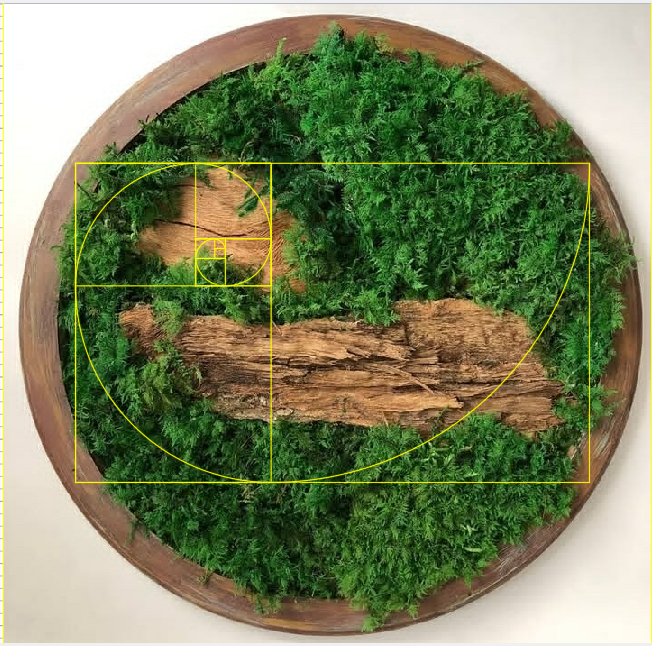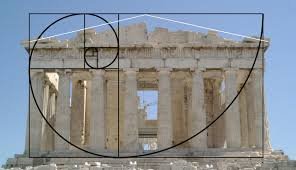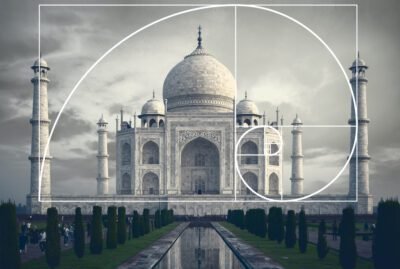Blog
Application of the Golden Ratio in Designing Moss Walls

Introduction
The Golden Ratio is a key concept in design and art that helps create balance and visual appeal. Considering the unique characteristics of moss green walls, this principle can be applied to their design to achieve an aesthetically pleasing and balanced appearance. This article explores the history, definition, calculation, and applications of the Golden Ratio in designing moss green walls, along with a review of historical works that have utilized this principle.
Definition of the Golden Ratio
The Golden Ratio is defined as follows:
The ratio between two parts (a and b) is such that the ratio of the larger part (a) to the smaller part (b) is equal to the ratio of the sum of the two parts (a + b) to the larger part (a). This ratio is approximately 1.618.
History of the Golden Ratio
The Golden Ratio has been of interest to Greek mathematicians since ancient times. Euclid discussed this ratio in his book Elements. In the 12th century, Leonardo Fibonacci introduced this ratio in his Fibonacci sequence. Luca Pacioli also explored this concept in his book Divine Proportion (1509), with illustrations by Leonardo da Vinci.
Historical Works That Used the Golden Ratio
- The Parthenon (Greece):
The Parthenon was designed using the Golden Ratio to evoke balance and beauty. Its dimensions align with the principles of this ratio.
- The Taj Mahal (India):
The Taj Mahal’s design is based on the Golden Ratio. Proportions such as the width of the central arch relative to the total width of the structure and the heights of its windows and main sections all adhere to this principle.
- The Pyramids of Giza (Egypt):
Some researchers believe that the Pyramids were constructed according to the Golden Ratio, contributing to their status as wonders of the ancient world. - Paintings by Leonardo da Vinci:
Da Vinci used the Golden Ratio to create visual balance in his compositions. The proportions of the Mona Lisa’s face and the arrangement of elements in The Last Supper are examples of this application.
Applications of the Golden Ratio in Designing Moss Green Walls
1. Designing Moss Green Walls
Moss green walls are made of stabilized moss that requires minimal maintenance and is easy to install. Applying the Golden Ratio in their design enhances visual appeal. For example, if a wall is 2 meters high, its width should be approximately 1.24 meters to conform to the Golden Ratio.
2. Use of Wood and Dried Branches
Adding wood and dried branches alongside moss can create a natural and beautiful effect.
- Wood Placement: Branches should be arranged to harmonize with the dimensions of the moss wall. For instance, if the branches are placed vertically, their lengths should correspond to the overall dimensions of the wall.
- Combining with Moss: Using branches as decorative elements adds depth and dimension to the design. They should be positioned to achieve balanced visual distribution, such as placing them in the upper or lower third of the wall.
3. Use of Pre-Made Panels
Moss green walls can also be created as pre-made panels designed to align with the Golden Ratio. These panels may feature a combination of different types of moss, all harmonized according to aesthetic principles.
4. Psychological Effects
Moss green walls not only enhance the aesthetic appeal of a space but also promote feelings of relaxation and comfort. Research shows that natural elements like plants and wood in indoor environments can reduce stress and create a pleasant atmosphere.
Conclusion
Designing moss green walls using the Golden Ratio enhances the visual beauty of a space while fostering a calming environment. Integrating natural elements such as wood and dried branches, guided by design principles based on the Golden Ratio, creates a unique experience for interior spaces. Given its rich history and broad applications, designers can use the Golden Ratio to create more balanced and captivating works of art and architecture that remain timelessly admired.


